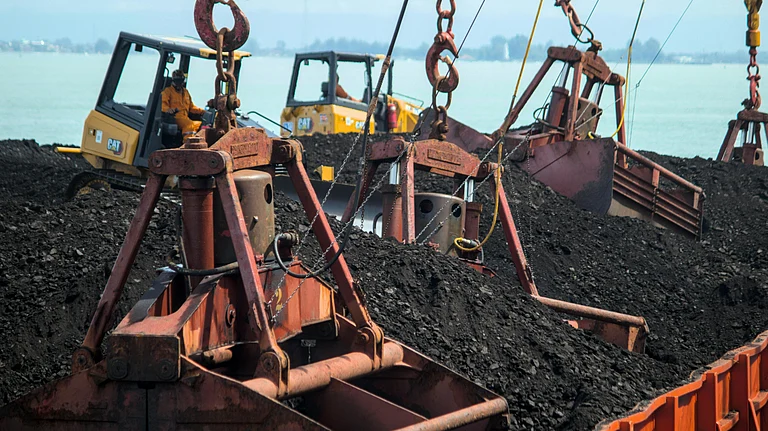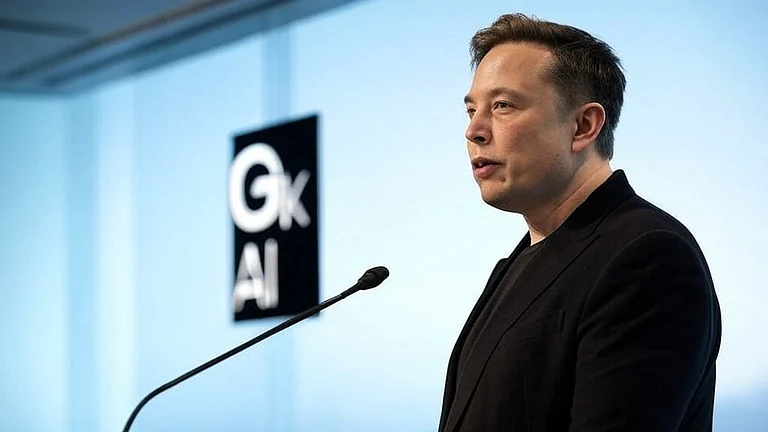The Covid-19 pandemic has exposed India’s underbelly on two fronts—education and health. With thousands of people dying over lack of timely medical care during the second Covid-19 wave that hit in April 2021, it was a nightmare that was finally coming true. For close to two years now, Indian kids have been out of school. Only those from an affluent background have had access to online classes, stoking fears of the destruction of a system that has always been India’s Achilles’ heel.
“Unfortunately, public expenditure on education in India has not come close to the recommended level of 6 per cent of GDP, as envisaged by the 1968 Policy, reiterated in the Policy of 1986, and which was further reaffirmed in the 1992 review of the Policy,” states the National Education Policy 2020.
The health sector tells a similar story. The Fifteenth Finance Commission had highlighted in one of its reports that India has about 1.4 beds per 1,000 people. This was much lower than countries such as China that had about 4 beds and Sri Lanka and the United Kingdom that had 3.
The report also pointed out that on comparable levels of per capita gross national income, India spends less than 1 per cent of its GDP on public health which is less than what neighbours Nepal or Bangladesh spend.
Against this backdrop, when Finance Minister Nirmala Sitharaman presents her Union Budget on February 1, she will be at the crossroads—to either take a path that keeps the stock market bullish in the short run or to make a long-term bet to turn India’s human capital into a high-return asset.
Centre Vs State: The Problem Of Accountability
While education is funded by both the Centre and the states, health is a state subject. However, for both sectors, the Centre holds the power to nudge the states to spend more, taking the overall expenditure for creating the educational and healthcare infrastructure to the desired levels.
“Centre and states together spend about 4 per cent on education. 80 per cent of funding in health and education comes from states but they are also dependent on the Centre to transfer resources. Devolution from the Centre is important for states to fund these two sectors. During the pandemic, the Centre raised funds through cess on petroleum goods. Cess does not go to states. So, instead of a 42 per cent transfer of resources, I am told only about 32 per cent was being transferred,” says Arun Kumar, professor at Institute of Social Sciences.

Centre’s Sleight Of Hand
In the Union Budget for 2021-2022, health and well-being saw a 137 per cent rise in allocation with the number going up to Rs 2,23,846 crore from a Budget Estimate (BE) of Rs 94,452 crore the year before.
However, such a high increase in the budgetary allocation for health was on account of clubbing the allocations made under different heads like nutrition and sanitation, drinking water as well as those made to the Ministry of AYUSH. If we calculate the hike in budgetary allocations to the health sector for 2021-22 under the sectoral divisions used in the Union Budget of 2020-21, the real increase comes to only 9.18 per cent.
An analysis of the percentage change in the health budgets between 2020-21 BE and 2021-22 BE done by the Centre for Budget and Governance Accountability (CBGA) says that at 21.75 per cent, Tamil Nadu’s health budget recorded the maximum increase in outlay followed by Uttar Pradesh (21.54 per cent) and Bihar (21.27 per cent). Jharkhand showed a fall of 3.07 per cent followed by Telangana (1.68 per cent) and Gujarat at (0.68 per cent). The figures assume importance as 2021-22 was the first post-pandemic budget.
“Some states like Delhi, Rajasthan, Goa, and Chhattisgarh have done pretty well in terms of increasing health outlay in their last budgets. They spent between 6 per cent and 8 per cent of their total state budget on health in last year’s budget. But, at the other end of the spectrum are states like Maharashtra, Telangana and West Bengal that are spending as little as 1.5 per cent to 4 per cent of their state budgets (on health) even after a pandemic,” explains Simonti Chakraborty, senior programme officer, CBGA.
Nutrition Concerns
Data from the fifth round of the National Family Health Survey (NFHS-5) recently highlighted the paradoxical growth story of India. While we have a scenario with a booming start-up industry flushed with cash and the overall economy showing signs of recovery after the pandemic-induced recession, there is another story which shows little sign of change even after years of concentrated efforts by public action. The nutritional outcome among the population—a key indicator of a nation’s overall progress and quality of life— remains on a sticky wicket.
According to the latest findings, the incidence of anaemia among children aged 6-59 months has increased from 58.6 per cent in 2015-16 (NFHS-4) to 67.1 per cent . In India, 35.5 per cent (NFHS-5) of children under the age of 5 are stunted. Meanwhile, the proportion in Bangladesh stood at 28 per cent in 2019, down from the 42 per cent it had reported in 2013 (UNICEF).
Investing In The Future
According to economist Arun Kumar, India has never spent more than 4 per cent of its GDP on public education even with the Kothari Commission recommending 6 per cent in 1968. “We have hovered around 3.5-3.8 per cent and, once in a while, reached 4 per cent. It is grossly underfunded. Also, since 1991, huge privatisation has been going on,” says Kumar.
Experts say that the direct fallout of underfunding of public education has been that more than 10 lakh government schools, with 52 per cent of India’s children, have not been adequately funded. Learning outcomes in India remain poor because of lack of funds.
“Additional efforts are required to develop synchronous delivery models and synchronous learning systems that run on low or intermittent bandwidth for students who may be in low bandwidth zones along with solutions that need neither connectivity nor personal devices, including TV, radio and pre-loaded devices. In parallel, there is a need for low-cost access devices designed specifically for learning. Also, large-scale initiatives are required to provide common access at school and village levels,” says Kamlesh Vyas, Partner, Deloitte Touche Tohmatsu India LLP.
The Fifteenth Finance Committee report had recommended sector-specific grants and identified eight sectors—health, agriculture, school education, higher education, aspirational districts, power, rural roads and administrative and governance reforms. Health was addressed through details discussed against the backdrop of the pandemic. The government responded to the report by giving ‘in principle’ acceptance to the sectoral grants and said it would examine some of the other recommendations. However, we are yet to see any action.
Successive governments have focused on reforms since the ’90s in India. Their performance is judged on the divestment targets and opening up of FDI in various sectors. Ironically, the Covid-19 pandemic punched the economy on the muscle we had left exposed for long without developing any defence for over three decades. Hopefully, with the upcoming Budget, the Finance Minister will start dressing up the country’s long-standing wound.






























